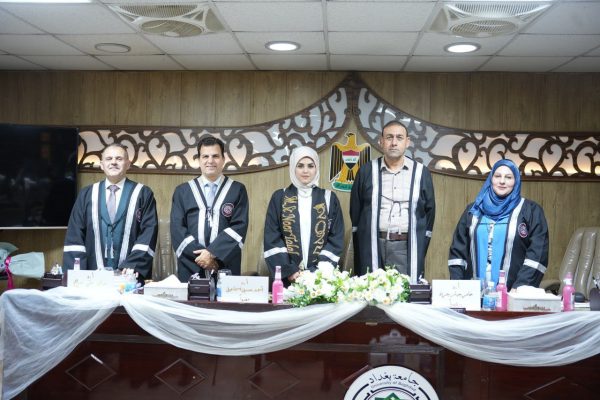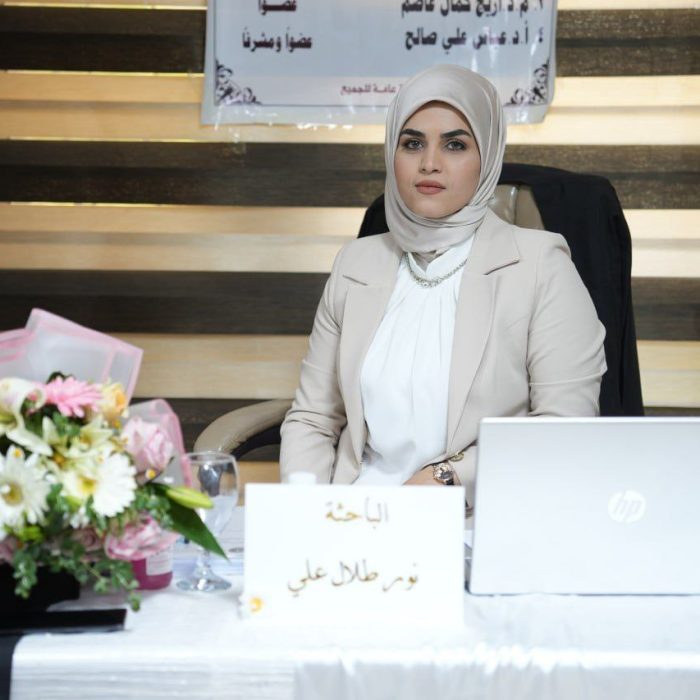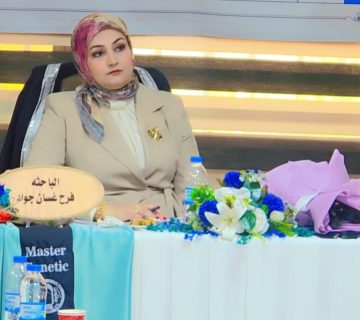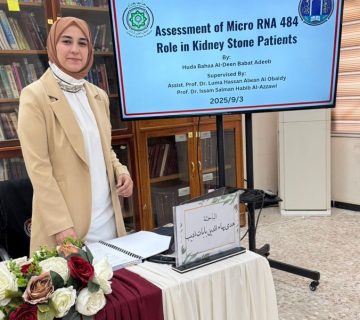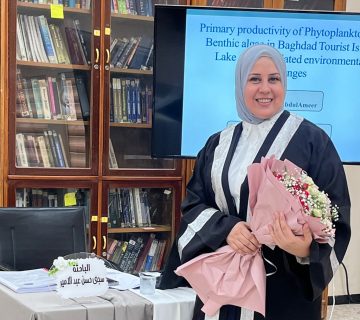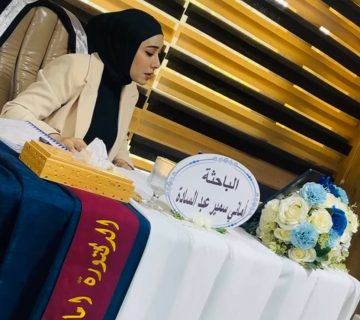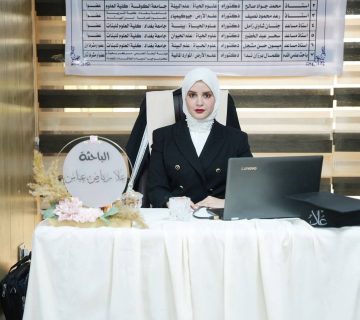Thesis Discussion
The College of Science for Women at the University of Baghdad held a Master’s thesis defense titled: Preparation, Characterization, and Study of the Biological Applications of Metal Ion Complexes with a New Ligand7-(3-Hydroxy-Phenylazo)-quinoline-8-ol
by the student: Noor Talal Ali
The importance of this study lies in the preparation of a new azo dye and its use in the synthesis of a new series of complexes with elements from the first transition series and some elements from the second and third transition series. These complexes were tested for their antioxidant activity. Additionally, complexes of zinc, cobalt, ruthenium, copper, vanadium, and molybdenum were tested and compared with cisplatin as anticancer agents against a breast cancer cell line using five different concentrations. Their thermal and structural stability was also evaluated.
The study was conducted at the University of Baghdad, College of Science for Women, Department of Chemistry. Antioxidant activity was measured in the laboratories of the Ministry of Science and Technology, Directorate of Environmental, Water, and Renewable Energy Research in Baghdad. The study included: (Infrared spectroscopy, UV-Visible spectroscopy, Mass spectrometry, Elemental analysis, Molar conductivity, Magnetic susceptibility, Chlorine content, Metal percentage, and Melting point determination).
Main Recommendations of the Thesis:
- Synthesis of new azo ligand complexes with lanthanide and actinide elements.
- Further study of the biological activity of the prepared complexes against other types of fungi in detail, using multiple concentrations and comparing them with known drugs on similar cyclic compounds, to explore their potential in the pharmaceutical field and drug development.
- Preparation of new ligands by substituting the added group (3-amino phenol) with other phenolic compounds to synthesize a new series of ligands.
- Studying the synthesized compounds against other cancer cell lines (colon, prostate, skin, etc.).
- Studying their activation potential against bacteria and fungi.
- Studying their dyeing ability on textiles.
